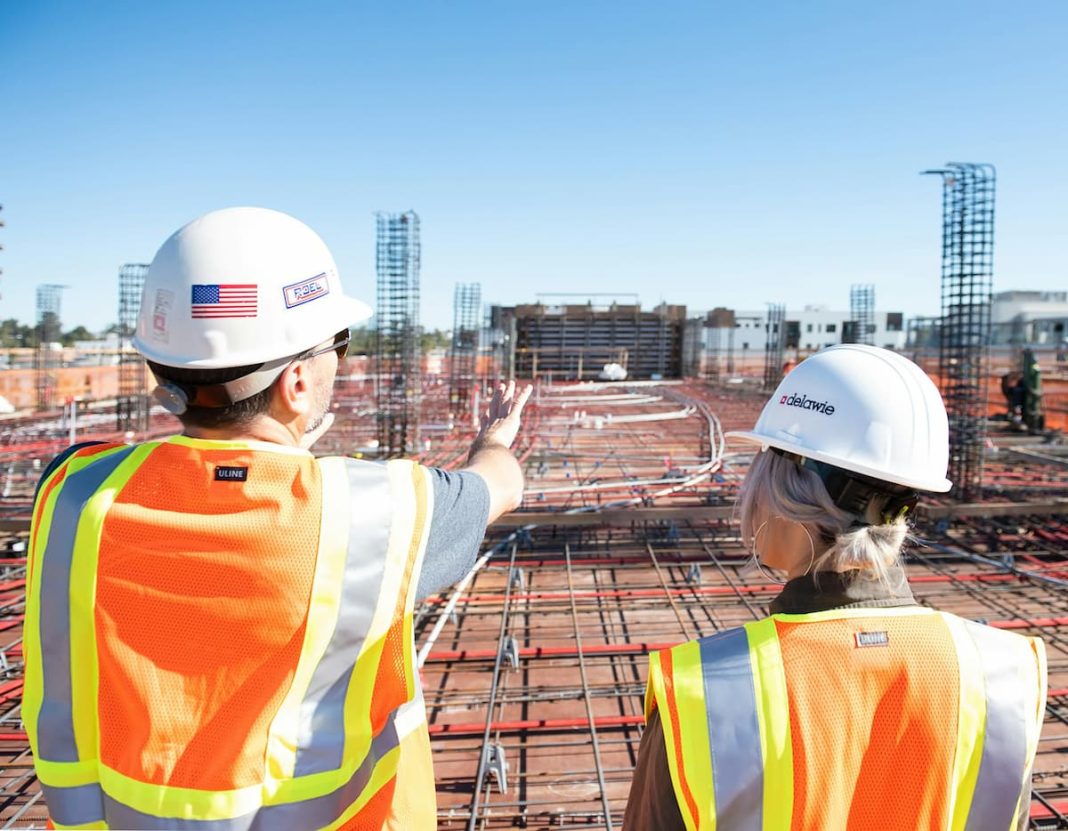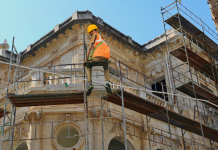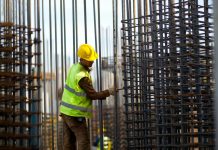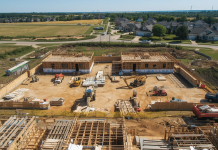The construction industry is still one of the most hazardous industries in the USA, having contributed to nearly one out of five workplace deaths as per the OSHA statistics. As we progress through 2025, construction workplaces are experiencing increasing safety regulation that requires in-depth staff training and certification. It is not only about regulatory compliance that helps to understand these requirements, but also about protecting lives and ensuring the success of a project.
Construction companies today must navigate an increasingly complex landscape of federal, state, and local safety requirements. Modern construction employees must exceed the demands of the modern work environment with extensive safety training that might encompass specifications as mandated by OSHA programs.
The Importance of OSHA Training in Modern Construction
Construction sites are quite different and offer additional safety-related challenges that cannot be used as an excuse to implement incomplete safety training. The risks that the workers face on a day-to-day basis include falls, working with heavy equipment, electric hazards, and chemicals. The economic cost of an accident at work is much more than the medical expenses paid immediately after the accident happened. Construction contractors are subject to monetary OSHA penalties, higher insurance rates, project setbacks, and loss of reputation. What is more important is that proper training saves lives and prevents life-altering injuries.
OSHA’s construction standards have evolved significantly, with a focus on prevention through education. The 10-Hour OSHA Outreach Training course for construction is a voluntary program. Understanding these evolving requirements helps construction companies stay compliant while protecting their workforce.
OSHA Certification Requirements for Construction Workers
OSHA 10 Hour Training
OSHA 10 training is the entry-level safety education for construction workers. This all-inclusive program encompasses such basic safety topics as hazard identification, personal protective equipment (PPE), and basic safety procedures. The OSHA 10-hour course equips an employee with the necessary information to recognize and prevent some of the most frequent construction hazards.
Although OSHA 10 certification online offers flexibility to the workers and employers, this has to be done with approved providers to ensure that the training is of quality and meets the federal standards.
OSHA 30 Hour Training
OSHA 30 training is suitable for foremen, supervisors, and safety personnel. This initiative goes into the safety management, hazard analysis, and regulatory compliance requirements. The OSHA 30 training Online shows that workers are dedicated to excellence in safety and are eligible to work as a supervisor at a construction site. Many contractors now require this training for project managers and safety coordinators.
Construction Jobsite Requirements for Workers
Personal Protective Equipment (PPE)
PPE is used to protect workers against flying debris, falling objects, heavy machinery, high noise levels, and chemical exposure. Construction job sites have become more complex. These sites need more than the basic hard hat and safety boot training. Employees need to know how to select, use, and maintain the protective equipment. This includes:
- Safety glasses
- Face shields
- Hard hats
- Cut-resistant gloves
- Safety boots
- Fall protection harnesses
Fall Protection
The most crucial safety concern in construction sites is the training in fall protection. Level 3 upholds a six-foot fall regulation on any projects. On the occasion where employees need to work in areas taller than six feet, a fall protection plan should be delivered to the Safety Department of the Level 3 Construction.
This fall protection training includes:
- Recognition of fall hazards and assessment techniques
- Guardrail system installation and inspection
- Safety net system requirements and limitations
- Personal fall arrest system components and usage
- Ladder safety and proper positioning
- Construction and inspection of the scaffold.
- Roof work safety protocols
Employees should know that fall protection is no longer a choice, but it is a regulation that protects life. The training programs should underline the technical nature of fall protection systems as well as the necessity to use them regularly.
Electricity Safety Training
On construction sites, electrical risks are a great danger caused by overhead power lines to temporary wiring systems. Adhering to guidelines ensures the prevention of shocks, electrocution, and electrical fire.
The electrical safety training includes:
- Power line awareness and safe clearance distances
- Lockout/tagout procedures for electrical equipment
- Ground fault circuit interrupter (GFCI) requirements
- Extension cord safety and inspection protocols
- Electrical PPE selection and use
- Recognition of arc flash.
- Emergency response procedures for electrical incidents
Workers should realize that electrical safety is an aspect that should be observed at all times and in accordance with the set standards. The experienced electricians also take advantage of frequent safety refresher training.
Heavy Equipment Safety and Operation
Construction sites are dependent on various machinery and equipment. Only authorized and trained personnel should use all the machinery and equipment. This incorporates bulldozers, excavators, forklifts, and power gadgets.
The safety training of equipment should cover:
- Pre-operation inspection procedures
- Correct operating procedures and restrictions.
- Communication protocols with ground personnel
- Maintenance requirements and documentation
- Safe loading and unloading procedures
- Emergency shutdown procedures
- Blind spot awareness and accident prevention
Hazardous Communication and Chemical Safety
Construction workers are exposed to all sorts of risky chemicals, including solvents, adhesives, concrete additives, and cleaning agents. An unwritten hazard communication program should be instituted and adopted. When conducting work on all Level 3 Construction projects, a hazard communication training program has to be implemented.
Hazard communication training involves:
- Knowledge of Safety Data Sheets (SDS) and information.
- Chemical labeling requirements and interpretation
- Proper storage and handling procedures
- Personal protective equipment for chemical exposure
- Emergency response procedures for spills and exposures
- Waste disposal requirements and environmental compliance
State-Specific Training Requirements
Although OSHA offers the federal minimum requirements, there are numerous state training requirements. OSHA-approved training must be carried out by all employees on municipal and state construction projects that exceed $100,000 in total costs.
The states of New York, Connecticut, and Massachusetts also have particular hour requirements for construction projects within the state. California has additional standards imposed by Cal/OSHA that exceed the federal standards. The construction firms should be aware of the local demands to make sure that they comply with them to the maximum.
Best Practices for OSHA Training Programs
In order to achieve the maximum safety of the safety training program, the construction companies are supposed to:
- Get it started at the beginning: Before workers can set foot on active jobsites, they must have had extensive safety training.
- Take Advantage of Multiple Training Modalities: Get online training flexibility with practical, real-life exercises to achieve the best learning results.
- Document Everything: Keep good training records to show that you were compliant in case of an OSHA inspection.
- Offer Refresher Training: Periodic updates will keep workers abreast of new regulations and will highlight important safety principles.
- Bring to Your Operations: Although a standard OSHA training gives the basics, there are specific site hazards for which special training is necessary.
- Use Internet Training Services: OSHA online training provides flexibility to workers and is also rigorously educational.
Taking Actions: Your Next Steps
The safety requirements in construction will keep on changing; however, the main principle will always be the same, and this is that appropriate training saves lives. OSHA certification is the basis of workplace safety excellence, regardless of whether you are a construction worker looking to take a step up in your career or a contractor developing a safety program. OSHA 10 training and OSHA 30 certification are investments in your workforce that have a pay-off in safety performance and regulatory compliance.
Safety excellence in the construction industry is based on the ability of each worker to be knowledgeable and skilled enough to identify hazards and work in a safe manner. Through good focus on OSHA online training, construction firms can have better job sites and great businesses. Begin your safety base today with certified OSHA training programs that are up to date with the regulatory standards and equip your workforce with the demands of the contemporary construction task.
OSHA Certification Online
OSHAcertificationonline is a front-runner in the supply of OSHA-approved online safety instruction programs for construction and general industry employees. We offer advanced OSHA 10 and OSHA 30-hour courses to assist construction professionals in complying with federal and state training provisions and creating safer workplaces. We provide quality and interactive safety education that suits the busy schedules of the current construction industry through our online platform.









